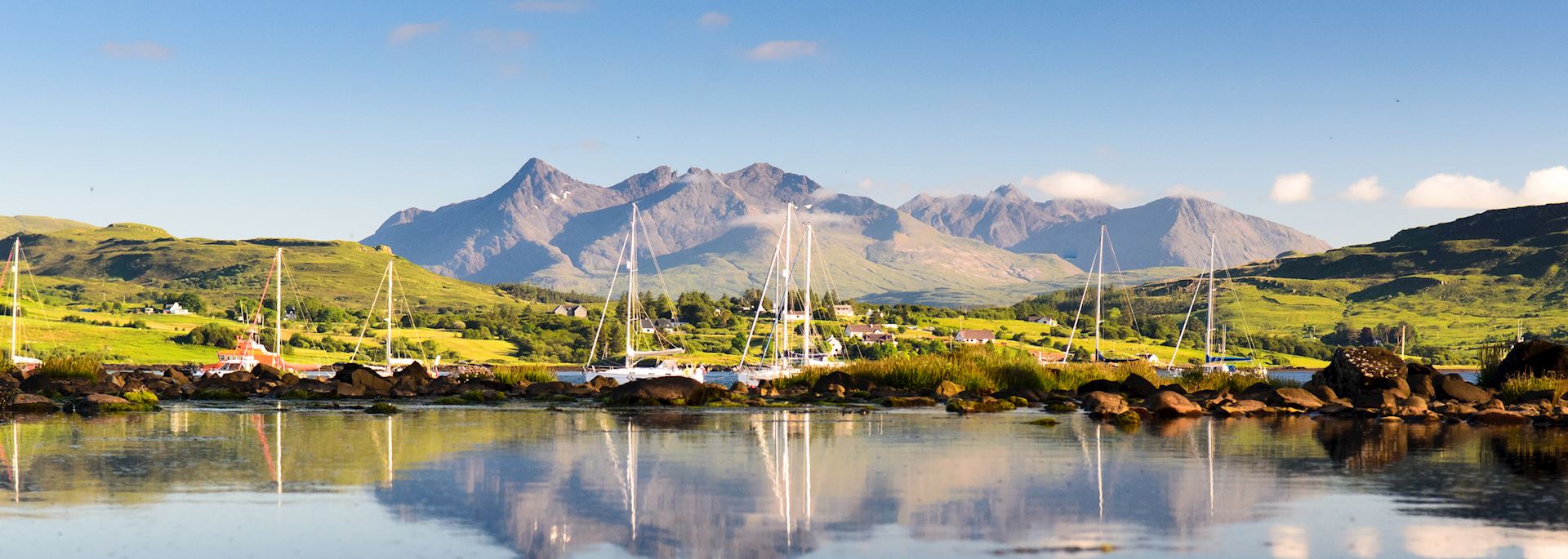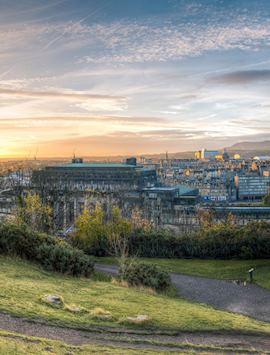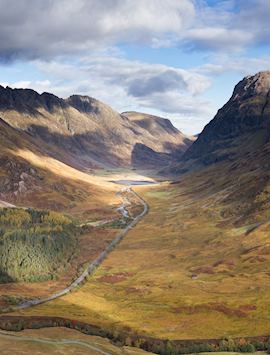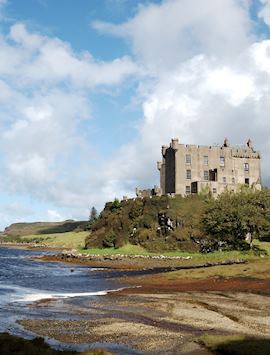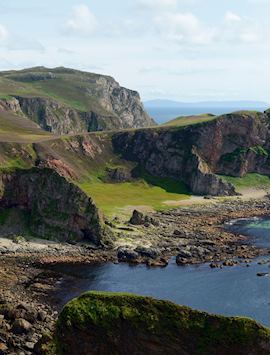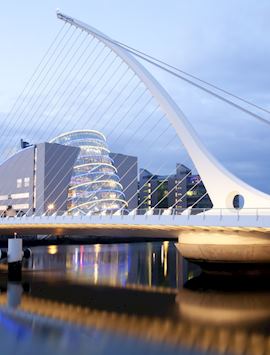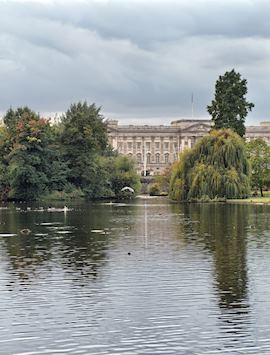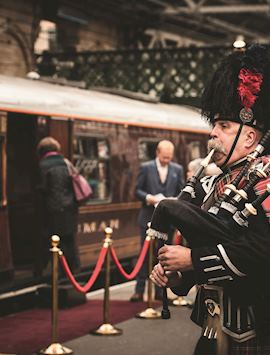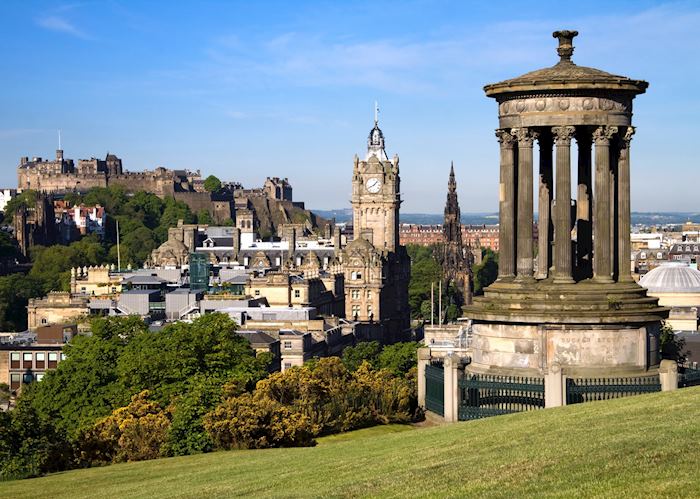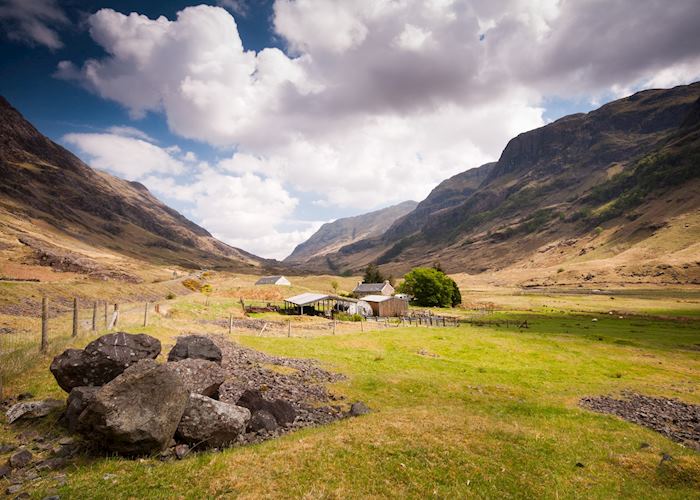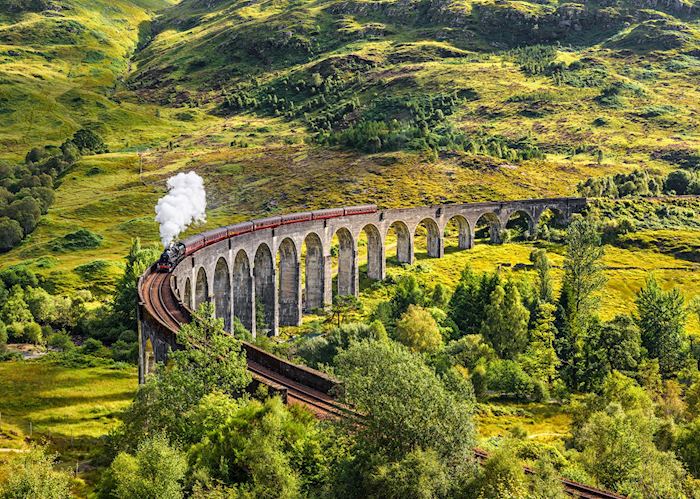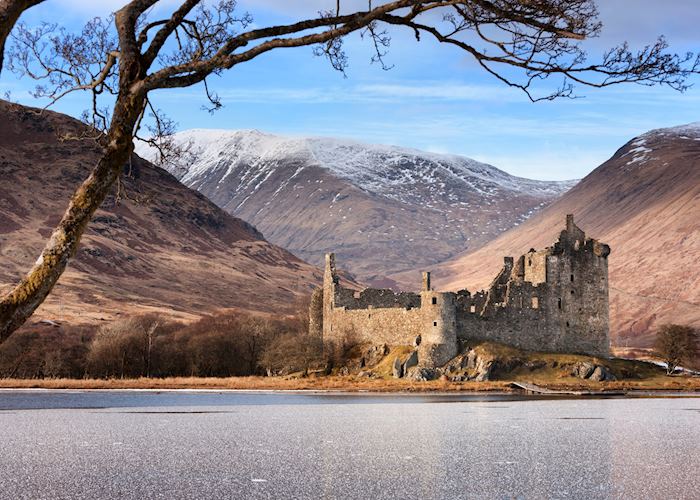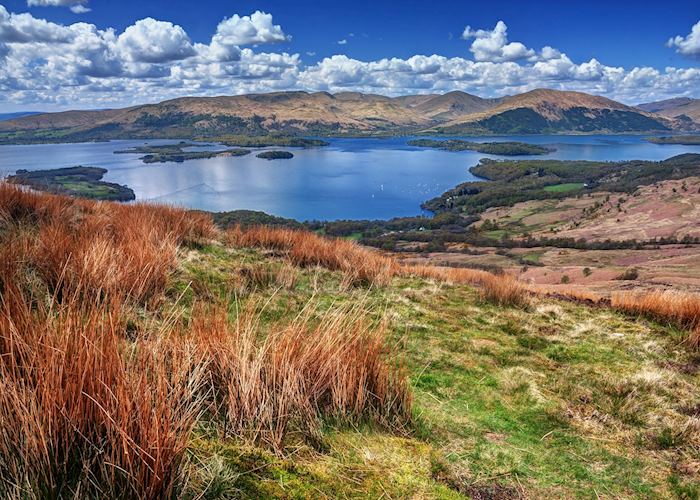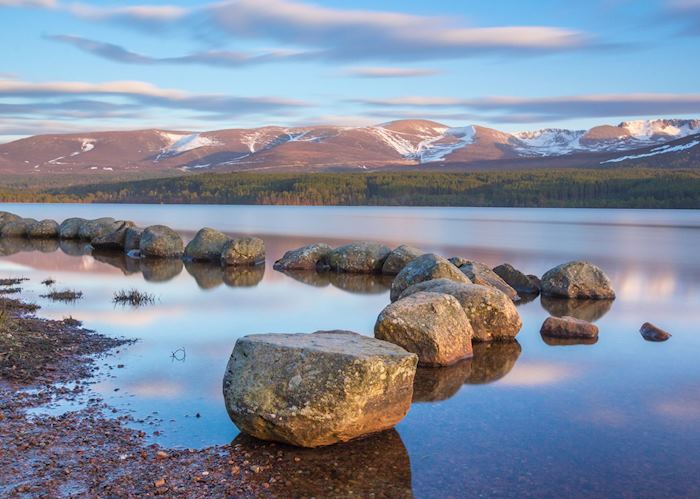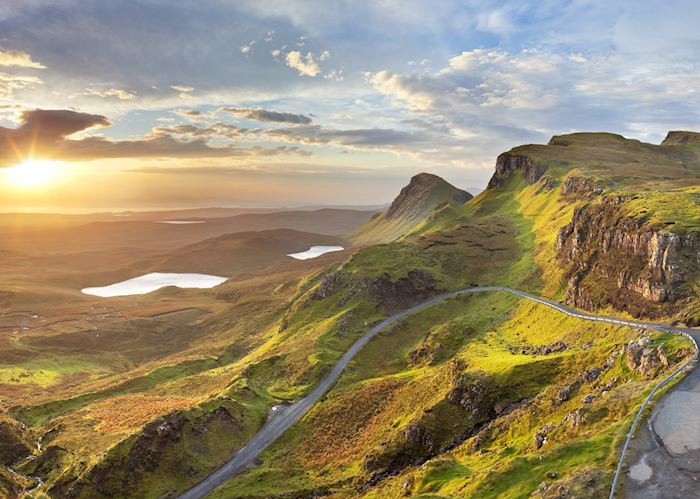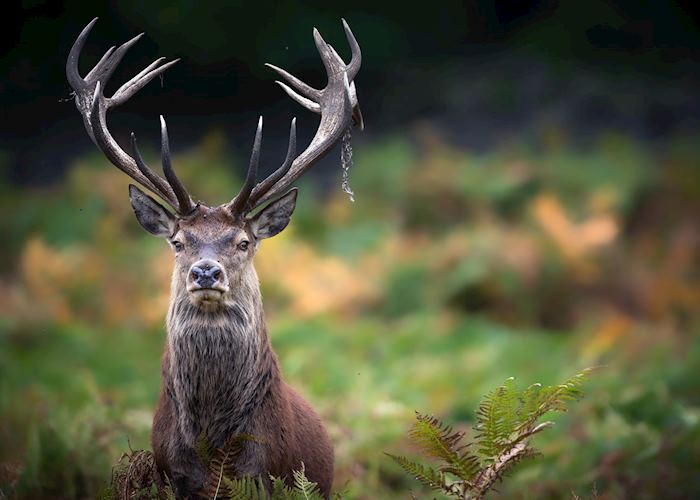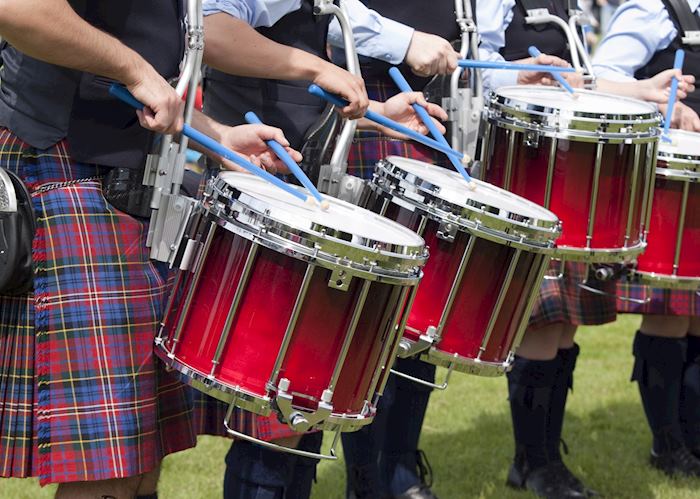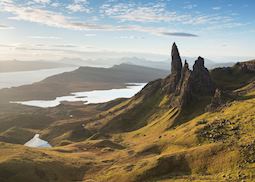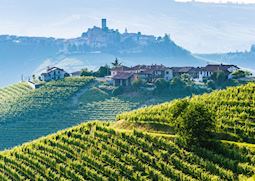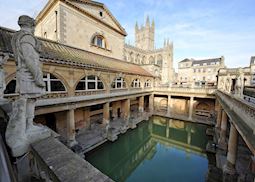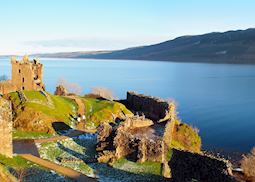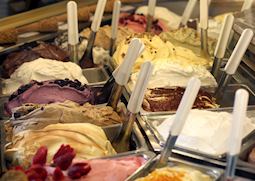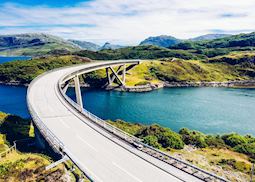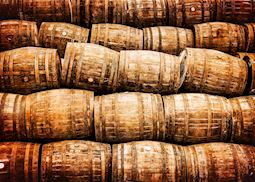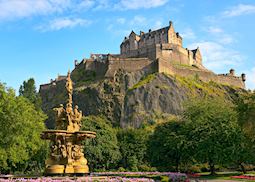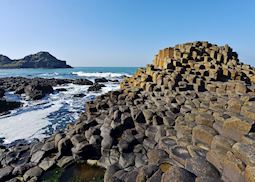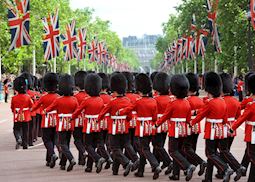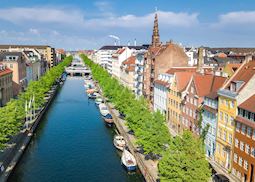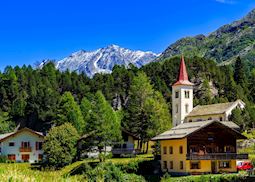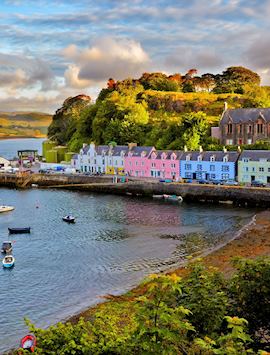
The last true wilderness of the British Isles, Scotland’s Highlands have the sort of boreal vastness that reminds you of Canada or Alaska. Our specialists are passionate about Scotland’s landscapes and can show you the best ways to experience them, tailor-making your stay to include hikes along far-flung lochs, wildlife tracking with a photography expert or exploring under the wing of a countryside ranger.
They’ll also help you dig deeper into Scotland’s proudly distinct cultural traditions, from bagpiping to single malt whisky production, and an entangled, sometimes bloody history with England that’s still strongly felt by Scots. Aside from its mountainous terrain, Scotland boasts modern, forward-looking cities. The capital, Edinburgh, mixes history, a dramatic setting atop a volcanic plug, and a vigorous arts scene that culminates in the annual Edinburgh International Festival and the alternative Fringe.
Whatever you decide to do, our specialists will ensure you make the most out of your vacation to Scotland.
Suggested tours for Scotland
These tours give you a starting point for what your vacation to Scotland could entail. Treat them as inspiration, as each trip is created uniquely for you.
Why travel with Audley?
- 100% tailor-made tours
- Fully protected travel
- Established for over 25 years
- 98% of our clients would recommend us
Best time to visit
Our specialists advise on the best months to visit Scotland, including information about climate, events and festivals.
Request our brochure
Covering all seven continents, The World Your Way shows you how you can see the world with us. It features trip ideas from our specialists alongside hand-picked stays and experiences, and introduces our approach to creating meaningful travel experiences.

Useful information for planning your vacation in Scotland
Scotland’s fresh, seasonal produce and wonderful distilleries provide great discoveries for food and drink lovers. With such a long coastline, fish and seafood is particularly good, and you’ll find smokeries in many small communities. Also look out for Cullen skink, a thick soup made with potatoes, smoked haddock, and cream.
Haggis, Scotland’s national dish, tastes far better than it sounds. A mixture of sheep's offal, onion, spices, and oats, it’s traditionally tied up in the lining of a sheep's stomach. You’ll often find it served with mashed neeps and tatties (rutabaga and potatoes). Porridge, boiled Scottish oats, is a staple on breakfast menus but is usually served salted rather than sweet.
Whisky is another local mainstay, and you’ll find distilleries across the country. The water source, distilling process, and ingredients used can result in distinct varieties of whisky in different regions, some mild and peaty, others strong and smoky.
English is spoken in Scotland. You’ll also see Scots Gaelic, a Celtic language once spoken across the country, on road signs and you may hear it spoken, especially in the Highlands and Islands. The country’s third language is Scots, which includes a wide range of regional vocabulary. Accents in Scotland can be strong, and many Gaelic and Scots words are used in spoken English, making the singsong lilts a challenge to decipher at times.
Scotland’s currency is the pound sterling (GBP). Scottish bank notes have their own design, however, and although they can be used elsewhere in the UK, smaller retailers might be reluctant to accept them. ATMs can be found all over Scotland, but you may not need much cash because most places accept credit and debit cards.
In Scottish restaurants, a tip of 10-15% is considered standard. Some restaurants will automatically add a gratuity to your total, and if so, no additional tip is needed. Tipping in pubs and bars is not expected. Tipping your tour guide or driver is always appreciated but is at your discretion.
For the latest travel advice for Scotland, including entry requirements, health information, and the safety and security situation, please refer to the Canadian Government Travel & Tourism website.
Scotland’s raw natural beauty, rich history and culture, and historic cities mean that you’ll be spoiled for choice when it comes to things to do. Home to some of the UK’s last tracts of wilderness, Scotland is an ideal destination for hiking, with steep mountains, inky lochs, and a varied coastline laced with a network of walking trails. You can take a wildlife cruise along the coast, track wildlife with a photography expert, go fly fishing with a local guide, take a steam train through the Highlands, or cruise around fabled Loch Ness as you listen to the strains of a bagpiper. Explore castles and historic estates, discover street art and musical history, take a tasting trail through Edinburgh, or uncover Islay’s complex history as you wind down country roads to some of Scotland’s most lauded distilleries.
Scotland offers a great range of places to stay, from country mansions and grand castles to sleek urban hideaways and world-class golf resorts. You could choose to stay in a traditional Victorian hotel overlooking the sea on the Isle of Skye, a convivial inn on Loch Lomond, or enjoy baronial grandeur in a 17th-century castle in the Highlands. Gleneagles, a luxury escape set on a rural estate with three golf courses, attracts a wide crowd for its fine dining, indulgent rooms, and range of outdoor pursuits from fishing and shooting to riding and falconry.
In the cities, you’ll find comfortable international chain hotels as well as hotels with more character, such as stylish Georgian townhouses with chic, modern design or local landmark hotels brought up to date. Your specialist can make suggestions, but you’ll find plenty of ideas in our collection of places to stay in Scotland.
Scotland’s compact nature means it’s easy to combine visits to historic Edinburgh or edgy Glasgow with time spent in the remote Highlands or islands. Edinburgh with its lofty castle, evocative old town, and rich cultural scene, is often a first stop on any visit to Scotland. The country’s biggest city, however, is Glasgow, a thriving place known for its live music, street art and distinct character.
Heading north, blue-black Loch Lomond acts as a gateway to the weathered peaks and steep valleys of the Scottish Highlands. Untouched wilderness, wildlife watching, and historic estates await in the Cairngorms, the affluent university town of St Andrews is equally well known for its golf course, while the Isle of Skye with its rock pinnacles, rugged mountains, castles, and distilleries rewards and intrigues on many levels.
The Scottish train system is generally comfortable, and you’ll get to enjoy the scenic views even more if you’re not worrying about driving. Tickets can be booked online in advance and collected at your departure station, and ScotRail offer a number of rail passes, which are good value if you’re planning to travel mainly by train. If you travel outside peak morning and evening hours, you’ll also qualify for discounted tickets. Most trains offer a basic food service, but most passengers take their own food and drink on board.
Flights from Toronto, Canada to Edinburgh take around six and a half hours. If you’re coming from the prairies or the west coast, you’ll need to take a connecting flight which brings the journey time to around 12 hours from Calgary or 14 hours from Vancouver.
The time zone in Scotland is UTC+1 hour. Daylight Savings Time is observed between late-March and late-October.
The best way to get around in Scotland is to drive. With your own car you can easily get between sights and choose when to travel, but you’ll need to be ready to drive on the left.
Scotland’s rail and bus networks also cover most areas, though the Highlands and west coast islands are more difficult to get to by public transportation. We can also arrange private transfers if you prefer.
Canadian citizens can visit Scotland without a visa for stays up to six months.
Speak to your doctor for up-to-date advice about recommended vaccinations for Scotland. Alternatively, check the Government of Canada - travel vaccinations website. It’s also a good idea to ensure you are up to date on all vaccinations recommended at home.
You should check your passport is valid until your return home and has at least one blank page available before booking your trip to Scotland.
Scotland in pictures
Our expert guides to traveling in Scotland
Written by our specialists from the viewpoint of their own travels, these guides will help you decide on the shape of your own trip to Scotland. Aiming to inspire and inform, we share our recommendations for how to appreciate Scotland at its best.
-
Highlights of the Isle of Skye ![Old Man of Storr, Isle of Skye]()
Highlights of the Isle of Skye
Highlights of the Isle of Skye
Defined by dark stone crags, sheer cliffs and rugged glens, the Isle of Skye is an otherworldly destination for hiking, fishing, and whisky tasting. Scotland specialist Emily suggests some things to see and do while visiting the Scottish isle.
Read this guide -
6 reasons to visit Europe in autumn ![Barolo, Piedmont]()
6 reasons to visit Europe in autumn
6 reasons to visit Europe in autumn
From hiking among the heather in the Highlands of Scotland to truffle hunting in Greece to French wine harvest fêtes, Europe is really at its best in autumn. Here are six reasons to visit after the summer crowds have gone.
Read this guide -
Uncover ancient Britain beyond Stonehenge ![Roman Baths, Bath]()
Uncover ancient Britain beyond Stonehenge
Uncover ancient Britain beyond Stonehenge
Stonehenge is the most popular prehistoric site in Britain, but it’s not the country’s only ancient attraction. Discover the limits of Roman power at Hadrian’s Wall, a Stone Age barrow near Avebury and Bronze Age cairns featured in Outlander.
Read this guide -
Luxury vacations in Scotland and England ![Loch Ness]()
Luxury vacations in Scotland and England
Luxury vacations in Scotland and England
Stay in a manor house, dine in Michelin-starred restaurants, cruise Loch Ness in a luxury motorboat and get exclusive after-hours access to Dunvegan Castle. Our UK specialist Jackie describes the indulgent touches you can add into your trip to Great Britain.
Read this guide -
20 Festivals in Europe worth visiting ![Gelato, Italy]()
20 Festivals in Europe worth visiting
20 Festivals in Europe worth visiting
From small village fairs to sophisticated, city-wide fêtes, Europe boasts a calendar of festivals to satisfy almost any interest. Discover new varieties of gelato in Florence, party all night in Paris and attend a Regency-era ball in Bath.
Read this guide -
Driving Scotland’s North Coast 500 route ![Kylesku Bridge]()
Driving Scotland’s North Coast 500 route
Driving Scotland’s North Coast 500 route
Scotland’s NC500 is a road trip that’s fast gaining a reputation for being the most scenic drive in Britain. As you explore the 830-km (516-mile) loop, you’ll see everything from mountains to lochs, sandy beaches to waterfalls, small fishing towns to centuries-old castles.
Read this guide -
A whisk(e)y tour of Scotland and Ireland ![Whisky barrels]()
A whisk(e)y tour of Scotland and Ireland
A whisk(e)y tour of Scotland and Ireland
Scotland and Ireland’s distilleries produce everything from honeyed floral blends to brawny, peaty single malts. Andea — a UK and Ireland specialist and a long-time lover of whiskies — suggests the best and most interesting distillery tours for novices and connoisseurs alike.
Read this guide -
Edinburgh for first-time visitors ![Edinburgh Castle]()
Edinburgh for first-time visitors
Edinburgh for first-time visitors
UK and Ireland specialist Jasmine offers an insider’s guide to the indispensable sights in Edinburgh, including visits to Edinburgh Castle, Arthur’s Seat and the Palace at Holyrood. She also suggests some ways to see a different side of the city.
Read this guide
Tell us your travel plans and a specialist will be in touch
Other popular destinations
Still looking for ideas? If Scotland has captured your interest, we think you might also like these destinations.
